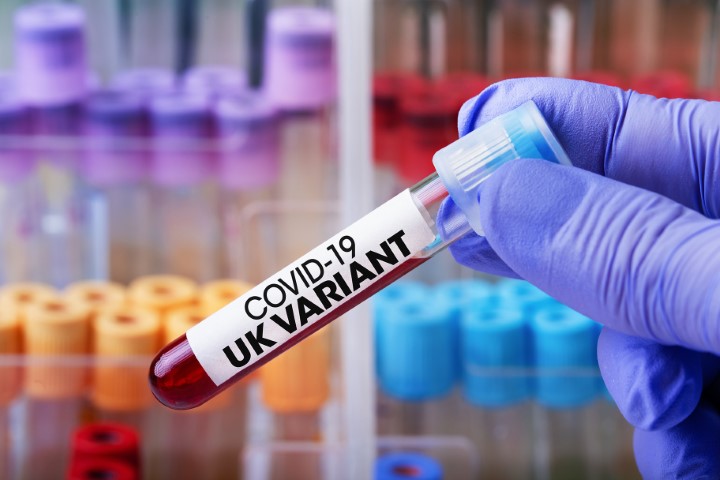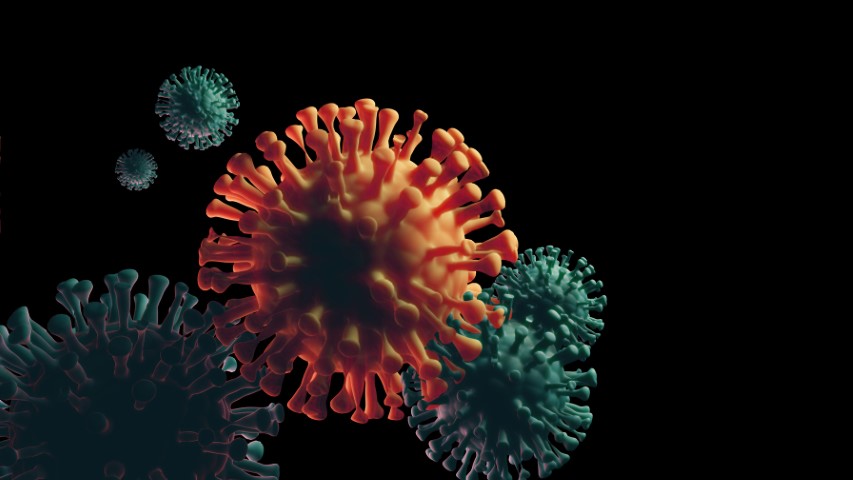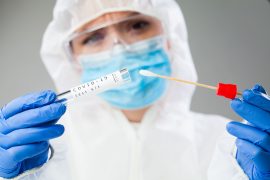Introduction
The mutation of viruses
The genetic material of SARS-CoV-2 is a ribonucleic acid (RNA) composed of over 30,000 units. Among numerous RNA virus families, the coronaviruses carry the largest genetic material. The majority of other RNA viruses are composed of about 10,000 units.
When any genetic material reproduces — be it the smallest viruses to humans — random errors (or mutations) occur. While higher organisms possess the mechanism to correct these errors, viruses and especially the RNA viruses do not contain any such mechanisms. The majority of mutations are harmful, but such viruses are never seen. Only those mutations that provide some careful advantage result in the development of novel viral variants.
Why is the new variant of SARS-CoV-2 from the United Kingdom causing fear?
Three things are accumulating at present which is causing fear concerning the UK variant:
- It is swiftly replacing other versions of the SARS-CoV-2 COVID-19 virus
- It carries mutations that disturb virus parts which are probably important
- Some of those mutations have at present been presented to elevate the virus’s ability to infect cells in laboratory investigations.
There is extensive concern that these mutations may end the role of currently used tests in detecting the virus, make it more threatening, or let it escape the vaccines. However, till now, no evidence exists which proves any of the above worries. In any case, these variants were diagnosed by currently available RT-PCR tests.
Said so, there is clear evidence that this variant is more contagious. Patients getting infected with this variant produce more virus in their nose and throat, which leads to more shedding of the virus and more chances of transmission from one person to another. Though these variants seem not to be more lethal, being more contagious means that there would be higher numbers of severe infections and deaths, which is currently a cause for worry.
Why should people not panic?
The majority of professionals believe that vaccines presently in development and use would also work on the variant viruses.
Will the vaccines work against the new variant?
All leading vaccines, available in the UK and elsewhere, where the variant is spreading extensively, are capable of developing an immune response against the existing spike. Vaccines enable the immune system to attack several different target sites on the virus, hence despite a mutation of a single spike, the vaccines should still be effective.
How far has it spread?
The discrete mutant (named B.1.1.7) of SARS-CoV-2 was recently identified in the UK. The two earliest variants of this viral lineage were collected on September 20 and 21 from Kent and Greater London respectively. By December 15, this family grew to 1,623 viruses in London and other regions of the UK including Scotland and Wales, and then in Europe and later in Australia (4 from Australia, Denmark, Italy, and The Netherlands). On Christmas eve — the cases of these variant viruses more than doubled to 3,575; majority from the UK, but also being reported from France, Ireland, Israel, Hong Kong and Singapore.
Data suggests that cases in Denmark, Australia, and The Netherlands came from the UK. A similar variant even appeared in South Africa which shared several mutations of the UK variant, but seems not related to this one.
Has this phenomenon occurred earlier?
Yes. The virus that was detected first in Wuhan, China, is different from the virus that is found in the majority of the places in the rest of the world. The D614G mutated variant emerged in Europe in February and became the leading form of the virus, worldwide. Another mutated strain, called A222V, spread throughout Europe and was associated with Spanish patients, traveling in summer.
What do we know about the new mutations?
Viruses of the European line have gathered 23 mutations across 5 genes versus the original SARS-CoV-2 strains. Of these, there are 17 non-synonymous and six synonymous mutations. Notably, eight of the 17 non-synonymous mutations, are present in the protein that permits the virus to attach to and enter human cells. (Spike Protein)
- The N501Y mutation in one of the principal contact residues in the receptor-binding domain (RBD) of the spike protein increases its affinity for the ACE2 receptor. The N501Y change is also associated with increased infectivity and virulence in animal models. Both these mutations were earlier observed independently, but have come together in the UK variant viruses, resulting in a virus form that spreads more rapidly than before.
- The P681H mutation in the site of the cleavage between the S1 and S2 domains of the spike protein stimulates entry into vulnerable cells and surges transmission.
- Another mutation – an H69/V70 deletion, where a small portion of the spike is deleted – has appeared many times before. It has been suggested that this mutation elevates infectivity by two times in laboratory experiments. The same research suggests that the deletion produces antibodies from the blood of survivors which are less effective at countering the virus.



Does it make the infection more deadly?
No present evidence indicates that these mutations produce deadlier forms of the disease, but, it needs to be watched. Also, just growing transmission would be sufficient to create troubles for the health care system. If the new variant is capable to infect more people rapidly, it would mean that an increasing number of people would necessitate hospital treatment at a single reference point.
Can such mutated variants spread in India?
- Though India ceased all air-traffic from the UK and other European countries and increased surveillance at airports to stop importing this highly transmissible form of virus variant, such variants could develop within India with ease. In any case, India has reported more than 10 million confirmed cases and as per an estimate, 150 to 200 million people are already infected.
- A rapidly spreading variant called 501.V2 arose in South Africa and portions of the N501Y mutation of the UK variants have not been reported in India, yet, but viruses with the P681H mutation began showing up in July itself and currently 14% of SARS-CoV-2 spreading in India transmits this mutation. Though these viruses are chiefly reported from Maharashtra, cases have also been detected in West Bengal. One more such mutated form can easily transform the current state of the pandemic in India to the state of the UK, which is a cause of grave concern.
- The conditions thought to be conducive for the development of the UK variant are present in India also. Immunodeficient patients, who become chronically infected with SARS-CoV-2, stay positive for 2-4 months as compared to the typical 2-3 weeks.
- Sequencing of the viral genetic material from such patients has shown remarkably large numbers of changes. Viral genetic diversity from patient-to-patient is known to increase after plasma therapy, in immunodeficient patients, frequently used for treating such patients.
- Poor nutritional status is an established cause for weak immunity and clinicians in India have testified chronic infection in such patients.
- As of 9th January 2021, the number of people in India who have tested positive for the new mutated COVID-19 strain has reached 90.




Comments are closed.